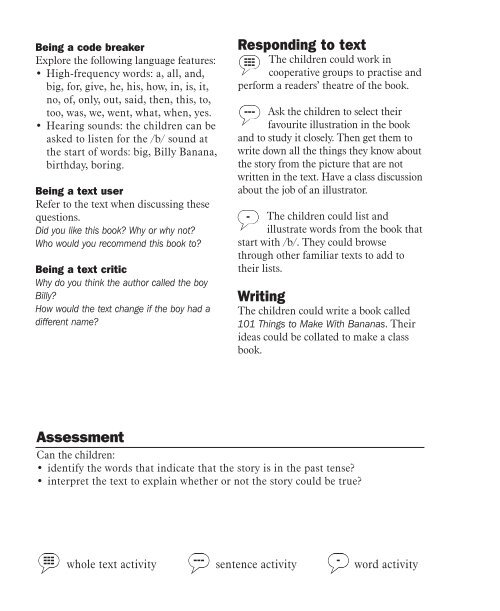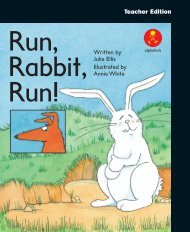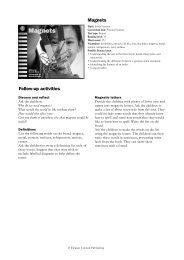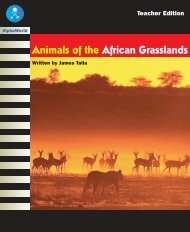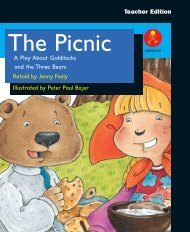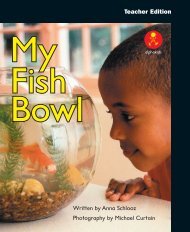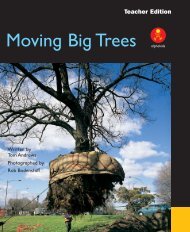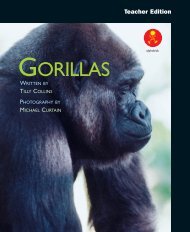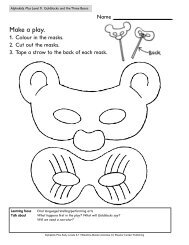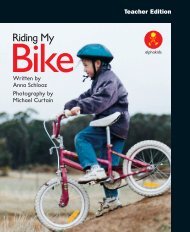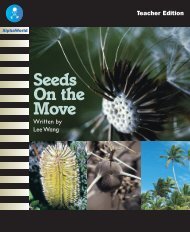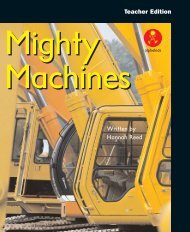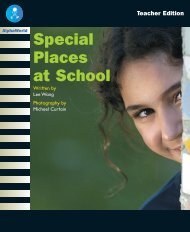Billy Banana
Billy Banana
Billy Banana
- No tags were found...
Create successful ePaper yourself
Turn your PDF publications into a flip-book with our unique Google optimized e-Paper software.
Being a code breakerExplore the following language features:• High-frequency words: a, all, and,big, for, give, he, his, how, in, is, it,no, of, only, out, said, then, this, to,too, was, we, went, what, when, yes.• Hearing sounds: the children can beasked to listen for the /b/ sound atthe start of words: big, <strong>Billy</strong> <strong>Banana</strong>,birthday, boring.Being a text userRefer to the text when discussing thesequestions.Did you like this book? Why or why not?Who would you recommend this book to?Being a text criticWhy do you think the author called the boy<strong>Billy</strong>?How would the text change if the boy had adifferent name?Responding to textThe children could work incooperative groups to practise andperform a readers’ theatre of the book.Ask the children to select theirfavourite illustration in the bookand to study it closely. Then get them towrite down all the things they know aboutthe story from the picture that are notwritten in the text. Have a class discussionabout the job of an illustrator.The children could list andillustrate words from the book thatstart with /b/. They could browsethrough other familiar texts to add totheir lists.WritingThe children could write a book called101 Things to Make With <strong>Banana</strong>s. Theirideas could be collated to make a classbook.AssessmentCan the children:• identify the words that indicate that the story is in the past tense?• interpret the text to explain whether or not the story could be true?whole text activity sentence activity word activity


